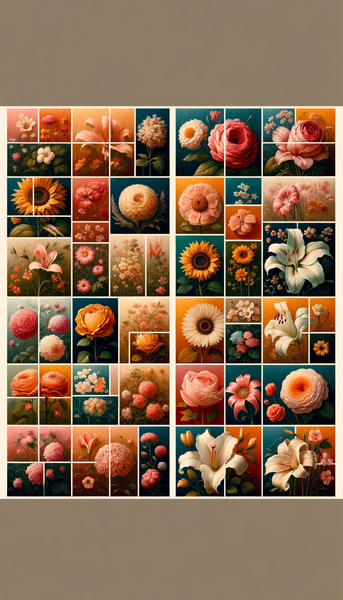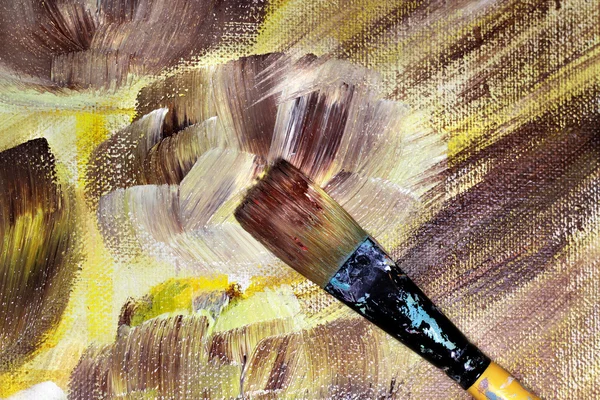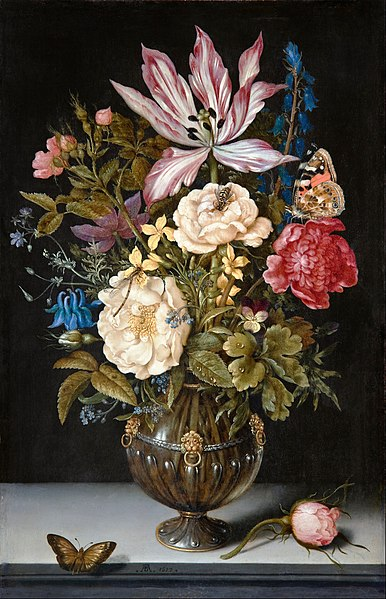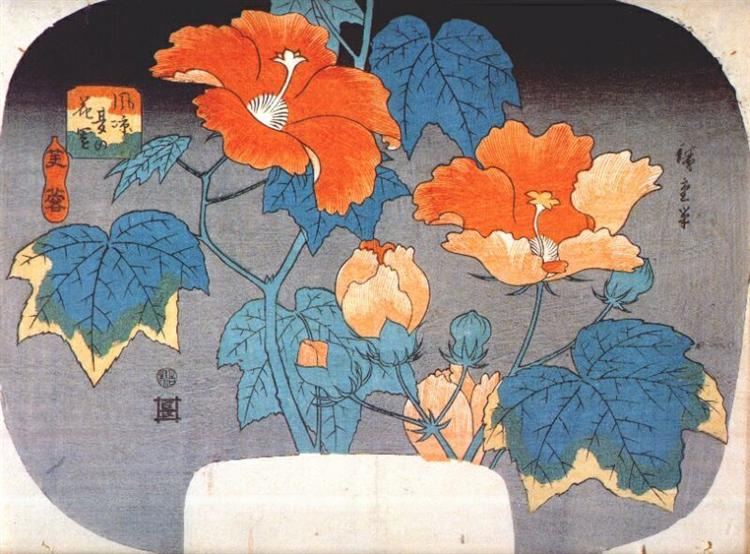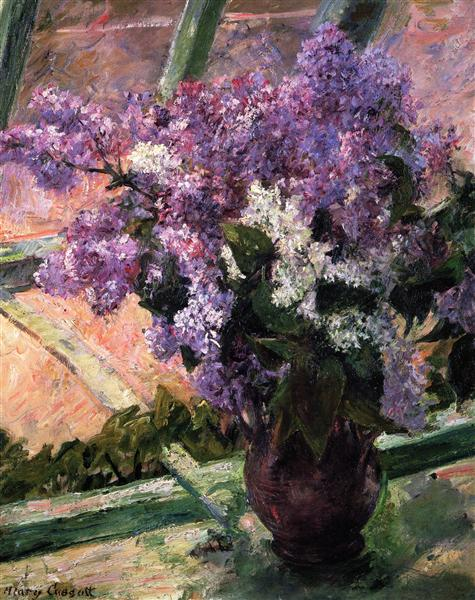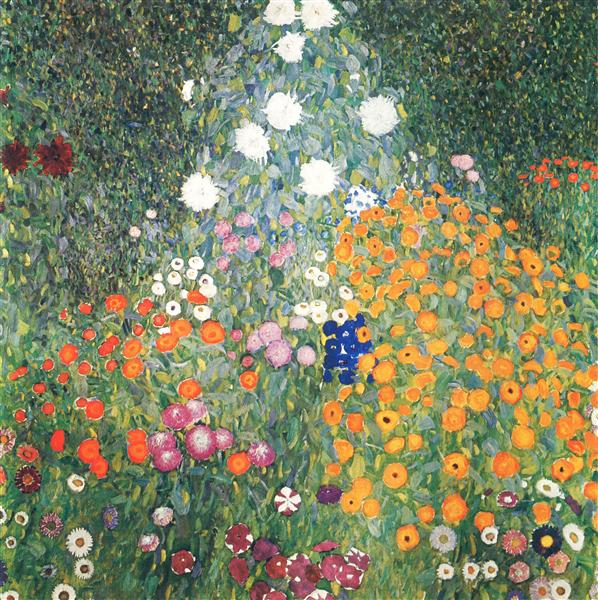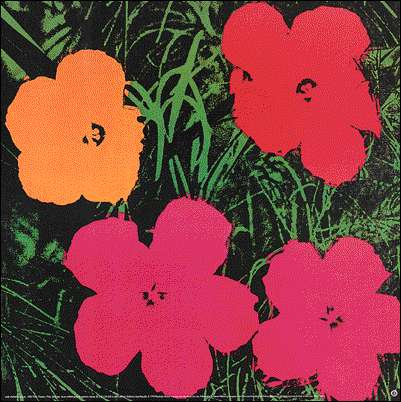10 Famous Flower Paintings That Bring Timeless Art To Canvas
Posted by MintSuper Art on 28th Jan 2024
The world of art is an ever-evolving tapestry filled with countless themes and subjects. Among these, one motif stands timeless - flowers. The beauty and symbolism associated with flowers have made them a popular subject in many famous paintings throughout history. This article will delve into the realm of floral artistry by exploring some renowned famous paintings of flowers.
Most Famous Flower Paintings That Maintain Their Brilliance in the Tapestry of Floral History
The charm and allure of floral paintings have inspired many flower artists throughout history. The vibrant colours, intricate details, and symbolic meanings embedded within each petal make them an ideal subject for artistic expression.
Here are 10 iconic flower paintings that continue to captivate audiences with their timeless beauty.
1. Flowers in a Glass Vase with a Cricket in a Niche by Rachel Ruysch (1700)
Artist: Rachel Ruysch Year: 1700 Medium: Oil on canvas Dimensions: 79.5 x 60.2 cm Location: The Hague
Among the famous paintings of flowers, "Flowers in a Glass Vase with a Cricket in a Niche" by Rachel Ruysch holds an esteemed position. This masterpiece was created during the Dutch Golden Age when art and culture flourished remarkably.
Rachel Ruysch was one of the few female artists who made significant contributions to this era. Born into an artistic family, she developed her skills under the guidance of Willem van Aelst, becoming well-known for her exceptional ability to depict nature realistically on canvas. Her work is characterised by its intricate detail, rich colouring and careful composition.
This painting showcases different types of flowers arranged elegantly inside a glass vase placed within an architectural niche where sits perched quietly – almost unnoticed – a cricket. The vibrant blooms are painted with such precision. Each flower stands out individually yet collectively contributes to creating harmony within the composition.
It represents the beauty and transience of life, as well as the traditional Dutch interest in the natural world and the scientific curiosity of the time. The painting is a testament to the extraordinary talent of Rachel Ruysch and her ability to bring nature's fleeting beauty to life on canvas.
It remains one of the most revered among famous paintings of flowers, maintaining its brilliance in the tapestry of floral history.
2. Still Life with Flowers by Ambrosius Bosschaert (1617)
Artist: Ambrosius Bosschaert Year: 1617 Medium: Oil on canvas Dimensions: w195 x h300 mm Location: Hallwyl Museum, Stockholm, Sweden
The world of art has been graced with countless masterpieces over the centuries, but few have captured the ethereal beauty and delicate intricacy of nature as well as the famous paintings of flowers. Among these is a work that stands out in its brilliance - "Still Life with Flowers" by Ambrosius Bosschaert.
Ambrosius Bosschaert was a prominent Dutch painter during the 17th century. He specialised in painting detailed floral arrangements, which were popular among wealthy patrons then. His works are renowned for their meticulous detail, vibrant colours, and realistic depiction
This artwork is an exquisite example of Bosschaert's mastery of capturing lifelike details on canvas. This piece features an array of beautifully arranged flowers placed within a glass vase set against a dark background. The flower composition includes tulips, roses, carnations, and other exotic species – each painted carefully. The vivid hues contrasted against the muted backdrop make every petal stand out.
One of the fascinating aspects about this painting is its symbolic depth. During Bosschaert's time, flowers were often associated with transience and mortality due to their short-lived bloom. The depiction of various stages of life, from buds to fully bloomed flowers, could be interpreted as a reminder of our existence.
"Still Life with Flowers" remains one of the most famous flower paintings that continue to inspire artists and captivate art enthusiasts around the world.
3. The Water Lily Pond by Claude Monet (1899)
Artist: Claude Monet Year: 1899 Medium: Oil on canvas Dimensions: 88.3 x 93.1 cm Location: The National Gallery, London
"The Water Lily Pond" is a masterpiece of Claude Monet, a French Impressionist landscape painter. This remarkable piece is part of an extensive series that Monet painted in his final years, capturing the beauty and tranquillity of his water garden at Giverny.
Monet was a pioneer in the world of Impressionism. His innovative techniques laid much groundwork for modern painting styles. Monet's work has had a significant influence on generations after him due to his approach towards traditional artistic norms.
"The Water Lily Pond" encapsulates all aspects of Impressionism: vivid colour usage, loose brushwork, and emphasis on natural light’s variability. It depicts a serene scene from his lily pond with a Japanese bridge arching over it – reflecting both Eastern influences as well as personal aesthetics.
In this painting, viewers can see how effectively he used contrasting colours — lush greens against vibrant pinks — which added depth while creating an almost dream-like quality. Moreover, it symbolises timeless sense through its reflection technique, where reality blends into reflections, thus blurring boundaries between tangible and intangible worlds.
This artwork stands out among other famous flower paintings because it doesn't just portray flowers but showcases an entire atmosphere. It's not merely about the water lilies; instead, they become part of a larger landscape that reflects Monet’s perception and feelings.
4. Hibiscus by Hiroshige (1845)
Artist: Utagawa Hiroshige Year: 1845 Medium: Colour woodblock print Dimensions: 34.3 x 11.2 cm Location: University of Wisconsin, Madison
Among the most famous paintings of flowers is "Hibiscus" by Utagawa Hiroshige, a renowned Japanese ukiyo-e artist. His works are notable for their distinct style and focus on nature, with this particular piece being no exception.
Hiroshige gained fame through his landscape prints which depict various scenes across Japan. Despite facing numerous personal tragedies throughout his life, including the early loss of parents and siblings, he continued to create stunning artworks that have stood the test of time.
"Hibiscus" painting showcases a hibiscus flower in full bloom against a simple background - an embodiment of elegance and tranquillity often associated with traditional Japanese art. The delicate petals are rendered beautifully using subtle shades, while attention to detail can be seen in each vein running through them.
In its simplicity and focus on a single hibiscus flower, the painting is often interpreted as an expression of empathy towards things. This philosophy appreciates beauty in fleeting moments and transient things, much like the short-lived bloom of a hibiscus flower.
By capturing this beauty through his art, "Hibiscus" is not just visually pleasing but also deeply meaningful.
5. Bouquet of Flowers by Edouard Manet (1882)
Artist: Edouard Manet Year: 1882 Medium: Oil on canvas Dimensions: 56.5 x 44.5 cm Location: Murauchi Art Museum, Tokyo, Japan
Delving into the world of painted flowers, we stumble upon a masterpiece that has maintained its brilliance over centuries. One such timeless piece is "Bouquet of Flowers"by Edouard Manet.
Edouard Manet was a French painter who played a pivotal figure in the transition from Realism to Impressionism. He was known for his innovative approach to painting. His early masterworks caused great controversy and served as rallying points for young painters who would create Impressionism.
The portrait features an array of vividly coloured flowers set against a dark background. This still-life painting showcases his mastery of colour and composition and highlights his keen observation skills. The bouquet comprises different detailed flowers, with each petal distinctively outlined.
This painting can be interpreted on multiple levels. On one hand, it could be seen as merely decorative; a celebration or perhaps even an exploration into nature's bountiful colours represented through flowers. It's also notable for its use of light and shadow, creating depth and dimensionality.
Overall, "Bouquet of Flowers" is a celebration of the beauty of nature and a testament to Manet's skill as a painter.
6. Roses and Lilies by Henri Fantin-Latour (1888)
Artist: Henri Fantin-Latour Year: 1888 Medium: Oil on canvas Dimensions: 59.7 x 45.7 cm Location: Metropolitan Museum of Art, New York
Henri Fantin-Latour, a French painter and lithographer, has left an indelible mark on the canvas of floral art history. His painting "Roses and Lilies" is one among many famous paintings of flowers, which continues to captivate audiences with its timeless beauty.
Fantin-Latour was born in Grenoble and later moved to Paris where he studied at the Ecole des Beaux-Arts. Known for his delicate flower still lifes, he also painted portraits and other subjects with great detail and precision. His work was influenced by the Realist and Impressionist movements, but he developed his own unique style that focused on the beauty and simplicity of every artwork.
"Roses and Lilies" depicts a bouquet of roses and lilies arranged in a glass vase on a table. The flowers are painted with great detail, and the soft colours create a sense of tranquillity and calmness. The painting is a beautiful example of Fantin-Latour's unique style and his ability to capture the beauty of everyday objects.
7. Still Life with Irises by Vincent van Gogh (1890)
Artist: Vincent van Gogh Year: 1890 Medium: Oil on canvas Dimensions: 92 x 73.5 cm Location: Van Gogh Museum, Amsterdam
Vincent van Gogh's work remains iconic in the world of art. One such masterpiece that continues to maintain its popularity is "Still Life with Irises." He was a Dutch painter who was among the most famous and influential figures in Western art history.
"Still Life with Irises" was created during his stay at the Saint-Remy asylum. This painting features irises in various stages of bloom arranged casually yet purposefully within a vase against a yellow field background.
The flowers are rendered in deep violet tones while their stems punctuate the canvas with dashes of green. The overall effect creates not only visual interest but also suggests deeper meanings related to life cycles – full bloom symbolises vitality while wilting blooms signify inevitable decay.
This artwork is a significant contribution to his body of work, showcasing his unique style and mastery of colour. It also stands out among other famous flower paintings due to its distinctive style, vibrant colour palette and emotive quality. It is a testament to Van Gogh's artistic genius that "Still Life with Irises" continues to captivate audiences since its creation.
8. Lilacs in a Window by Mary Cassatt (1880)
Artist: Mary Cassatt Year: 1880 Medium: Oil on canvas Dimensions: 61.5 x 51.1 cm Location: Metropolitan Museum of Art, New York
Delving into the world of famous artwork, one cannot ignore the creativity displayed in "Lilacs in a Window" by Mary Cassatt, an American painter and graphic artist known for her intimate portraits, often capturing friends and family in quiet moments of their lives. She was associated with the Impressionist movement and is recognised for her contributions to the art world through her unique portrayal of human subjects and occasional still-life compositions.
"Lilacs in a Window" demonstrates not only her technical skill but also emotional depth. The painting features a beautiful arrangement of lilac blooms placed on a window sill against what appears to be either early morning or late evening light.
In this piece, you can see how masterfully she used contrasting colours - deep purples against pale blues - creating an enchanting visual effect while capturing the beauty inherent in nature’s bloom cycle. This balance between colour contrast and composition reflects both realism and impressionistic influences.
Cassat's choice to paint lilacs wasn't just aesthetic; it carried symbolic weight as well. During Victorian times, when this artwork was created, lilac flowers symbolised first love and innocence. By placing these flowers in this setting - on a window sill, she subtly conveys the beauty of everyday life while adding an element of sentimentality.
Thus, "Lilacs in a Window" is not just about the physical representation of flowers but also explores themes such as transience, love and everyday beauty. It's this depth that has cemented its place among other famous paintings of flowers.
9. Flower Garden by Gustav Klimt (1905-1907)
Artist: Gustav Klimt Year: 1905-1907 Medium: Oil on canvas Dimensions: 110x 110 cm Location: Belvedere, Vienna
"Flower Garden" was created between 1905 and 1907 by Austrian symbolist painter Gustav Klimt. Known for his unique artistic style that often combined symbolic subjects, Klimt's contribution to flower painting has been monumental. He pushed boundaries with his distinctive approach and vision.
Gustav Klimt played a significant role in shaping the Vienna Secession art movement. His primary subject matter ranged from portraiture to landscapes, but he had an exceptional affinity towards depicting women and nature. Despite criticism during his time for explicit content in some works, he was celebrated as one of Austria's most gifted artists.
"Flower Garden," also known as "Bauerngarten," reflects the artist's love for landscape painting, which developed later in his career. It is believed that this masterpiece was inspired by the gardens surrounding Litzlberg Castle on Lake Attersee, where he spent many summers. This features vibrant colours; hues range from bright yellows and greens to subtle pinks, creating a sense of depth and texture throughout the canvas.
The composition of the painting is impressive, with a wealth of detail intertwining to create a complex and beautiful image. The garden itself is a maze of flowers and leaves, with a myriad of colours and textures combined to create a sense of movement and life. Each brushstroke demonstrates meticulous attention to detail, making each blossom come alive, thus showcasing artistic talent and a deep appreciation for nature's beauty.
In this painting, as in many of his other works, Klimt has skillfully used flowers to convey emotions and ideas, making it one of the most famous flower paintings that maintain their brilliance in the tapestry of floral history.
10. Flowers by Andy Warhol: Hibiscus (1964)
Artist: Andy Warhol Year: 1964 Medium: Acrylic and silkscreen ink on canvas Dimensions: 61 x 61 cm Location: Pittsburgh, Pennsylvania
In the world of famous artworks, one name that stands out is Andy Warhol, an iconic figure in pop art. Warhol was known for his unique style and bold experimentation with colours and forms. His contributions to flower painting have pushed its boundaries far beyond traditional representations.
The "Flowers" is a prime example of his innovative approach towards floral depictions. This piece showcases a hibiscus flower against a dark background, painted using silkscreen printing - a mechanical art style typically used for commercial art.
This painting features vibrant hues placed against each other to create a striking contrast. The petals are rendered in bright pink and red tones. The "Flowers" series is a unique and significant work that still captures attention today due to its departure from Warhol's typical style and subject matter.
Warhol was inspired by modern consumer culture and found beauty even in everyday objects like soup cans or Coca-Cola bottles. Flowers were no exception to this fascination as they represent both natural beauty and commercialisation through their use in decoration or gift-giving occasions.
This painting is a testament to Warhol's ability to transform the mundane into something extraordinary. The "Flowers" and other flower works have solidified Andy Warhol's place in art history. His unique style has influenced countless artists, proving that even something as simple as a flower can be turned into powerful visual commentary when viewed through different lenses.
Conclusion
In the world of art, flowers have always been a source of inspiration for many artists. The beauty and elegance they exude are often captured in famous paintings of flowers that still maintain their brilliance today. We walked through time, seeing styles bloom and fade, each era adding its own touch to floral masterpieces. The artworks we talked about – they’re what make those flowers almost breathe on canvas.
MintSuper Art believes there's beauty waiting to be discovered in every blossom. Our collection celebrates not just famous flower paintings but also lesser-known gems that deserve appreciation too! We strive to ensure everyone finds a canvas that resonates with their personal style and aesthetic.
Whether you're an interior designer looking to add a touch of elegance to your work or simply someone seeking the perfect gift for a loved one, our flower category has something for everyone. Browse through our collection today!

